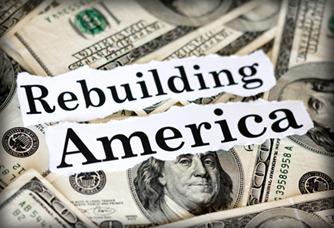 The innovation engine that powered the U.S. economy over the last century seems to be slowing down and dying, threatening not only local opportunities, but the economies all over the world. The $30 billion trade surplus in advanced technology products that America enjoyed just one decade ago has now become a $56 billion deficit.
The innovation engine that powered the U.S. economy over the last century seems to be slowing down and dying, threatening not only local opportunities, but the economies all over the world. The $30 billion trade surplus in advanced technology products that America enjoyed just one decade ago has now become a $56 billion deficit.
More and more people, like Henry R. Nothhaft, in his new book “Great Again: Revitalizing America's Entrepreneurial Leadership” are already calling these last ten years the “Lost Decade.” Nothhaft has put together a challenging but small list of things we have to do to revitalize our innovation leadership, and I’m supportive:
-
Liberate entrepreneurs from regulatory shackles. Startups in the U.S. face the highest combined federal and state tax rates in the world. At 39%, it’s more than 50% higher than the European Union countries average of 25.5%. Rates around the world are still going down, while U.S. rates have remained fixed for the last ten years.
In addition, due to Sarbanes-Oxley and other regulations, accounting costs have gone up an estimated four times for all businesses, and 2008-2009 represented the worst IPO market in forty years. We need a regulatory regime that nurtures startups, rather than penalizing them like giant corporations.
-
Fix the patent office to keep up with the backlog. Since 1992, Congress has diverted nearly $1 billion in applicant-paid fees already earned by the USPTO to other uses (like the 2010 census), leaving the patent office unable to deal with the threefold increase in patent applications over the last 20 years.
As of January 2011, there are a staggering 1.2 million applications awaiting approval, and more than half have never had an initial review, which really hurts startups. The average total fees for obtaining a patent are now way up to $38,000. In most cases, no patent means no financing, no new products, no new jobs, and no new industries for tomorrow.
-
Offer meaningful incentives to bring back high-tech manufacturing. In the last ten years alone, more than one-third of America’s largest factories have shut down. That’s 42,400 factories, including 15 semiconductor plants, and 12 million lost jobs. We now produce only 14% of the world’s supply of semiconductors, and even less of other things.
Both China and Taiwan now provide a 5 year, zero-tax holiday, for semiconductor manufacturers, followed by 5 years at rates as low as 5%. Germany, Ireland, Israel, and most other non-Asian nations also provide major tax incentives, and huge R&D tax credits. We need to make a strong manufacturing base a national priority.
-
Ease immigration rules to turn brain drain to a brain gain. Studies show that foreign immigrants who enter on H-1B visas make a greater innovation and scientific contribution to the nation, by patenting at double the rate of native-born Americans, and publishing more highly-cited engineering articles.
In fact, between 1995 and 2005, these same immigrants founded over 50 percent of the venture-backed technology companies in Silicon Valley, and are some of the key venture capitalists there as well. The evidence is that immigrants don’t take jobs, they create them by the millions.
-
More programs to support basic science and research. Over the past decade, there has been an exodus of scientific and technical expertise from the DoD (Dept of Defense) and academic community, with basic research dropping from a high of 26% in the 1960’s budget to only 12% of their budget today.
Government should learn from private industry and invest research funds just like a venture capitalist invests startup capital. It should invest in people and teams first of all, and let startup entrepreneurs take the fruits of that research and build from it a better tomorrow.

